The Japanese way of viewing nature is deeply rooted in the nation’s cultural, spiritual, and philosophical beliefs. The Japanese place heavy importance on harmony, respect for the elements, and a deep connection to the natural world, and this has birthed a whole aesthetic which can be seen clearly in any of the Japanese gardens that exist in countries all around the world. Interested in the Japanese garden aesthetic? For today`s topic, we`ll explore this distinctive feature of Japanese culture, so take a stroll with us while we explore bonsai exhibitions, traditional Japanese gardens around Tokyo, and trying out the art of Japanese floral arrangements known as ikebana.
How is Nature Perceived in Japan?
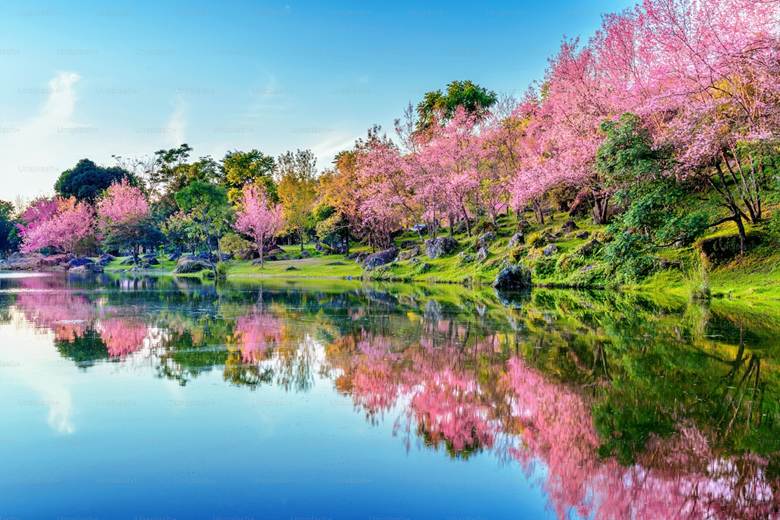
Shinto is the native religion of the Land of the Rising Sun. Its major tenets include the belief that everything in nature has a spirit, or a kami, associated within. From towering mountains to fast-flowing rivers, every tree, animal, and rock has a spirit. Even certain man-made objects such as bridges hold significance. This focus on the natural world translates to a deep respect and honoring of the natural elements, as well as a great spiritual significance bestowed onto mighty natural phenomenon. Towering, old trees in holy places, such as shrines and temple grounds, are often revered for their sheer size, and considered sacred. Zen Buddhism has also had a significant influence on Japanese culture. Likewise, it emphasizes mindfulness and a deep connection to nature. With the four seasons influencing and impacting Japan’s natural landscape and scenery, it`s no surprise nature and all its beauty is held in the highest regard when it comes to traditional Japanese philosophy, ideas, and art.
Japanese Philosophies, Ideas, and Art
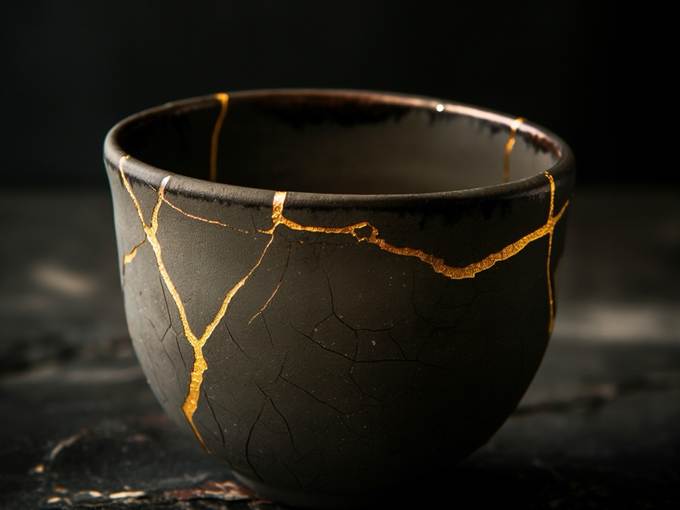
Wabi-Sabi is a Japanese aesthetic stemming from this nature-based mindfulness. As nature is hardly perfect, imperfection, asymmetry, and transience are also features that are respected and treasured when it comes to natural elements. This even extends to common objects that exist in our everyday lives. For example, the blooming of cherry blossoms are commonly referred as beautiful, but the petals fall shortly just after blooming. Wabi-Sabi emphasizes the beauty and grace of both growth and decay, and challenges people to be mindful and appreciative of the present moment.
Mono-no-aware is another philosophy stemming from a connection to nature, and translates into an awareness of the impermanence of things. It encourages a deeper connection to the natural way of things and emphasizes the beauty of everyday life as intensified by impermanence.
These unique cultural ideas and philosophies have translated into beautiful artforms, including paintings, calligraphy, and ceramics – but they are also present in beautiful Japanese gardens, as seen by carefully maintained plants and even in the art of flower arrangement!
Experiencing Japan’s Natural Beauty in Tokyo
Here are some of the ways you can experience this unique facet of Japanese culture:
1. Visit a Japanese Bonsai Exhibition

Bonsai is the ancient Japanese art of growing and shaping miniature trees in containers. Some might be surprised to learn this practice has a history over a thousand years old. Driven by their cultural history and philosophy, the Japanese have innovated this beautiful art form with carefully arranged and maintained, shallowly potted trees.
Pine, maple, cherry, and even fruiting trees like quince and citrus are usually used for bonsai. Pots and stones are also considered important elements to the entire artform, and the idea of deriving beauty from simplicity is highly valued, meaning each element is carefully selected to contribute to the entire aesthetic.
Today, bonsai is a very distinct art that has specific, sophisticated shaping techniques and tools, and bonsai museums and exhibitions are common not only within Japan, but in many countries all around the globe! When observing the bonsai trees, you can truly appreciate the distinctiveness of this unique facet of Japanese culture, which fully embodies Japan’s idealized version of the natural world.
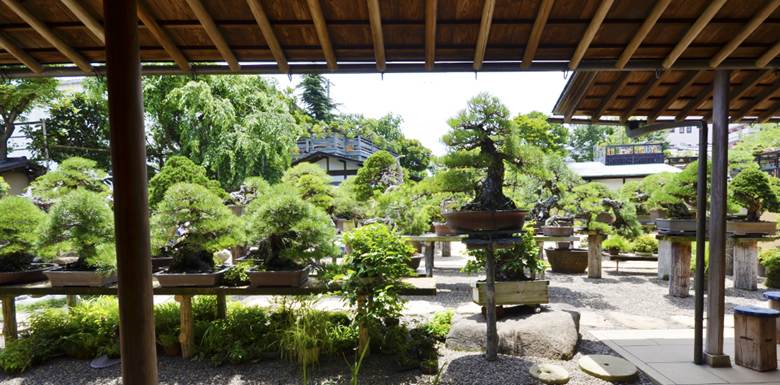
The Shunkaen Bonsai Museum in Tokyo houses a collection of over 1,000 trees, with the oldest and most famous bonsai being nearly a thousand years old, displayed right at the front of the building! Located in the Edogawa ward of Tokyo, the museum is very homely and showcases bonsai both indoors and outdoors. It also operates as a school for bonsai enthusiasts and horticulturalists! Open from 10:00 – 17:00, admission costs 2,000yen per entry. The museum is usually closed on Mondays, unless it is a public holiday.
2. Visit Japanese-style Gardens
Tokyo has an abundance of parks and unique Japanese-style gardens showcasing the country`s traditional aesthetics. As Japanese gardens are known for their focus on nature, they often feature elements like stone, water, and native Japanese plants. Japanese maples, bamboo, and zelkova, as well as flowering plants such as azaleas, camellias, and hostas are commonly planted, and used in charming varieties to give a splash of color to the natural landscapes. Japanese gardens also typically include hand-made elements, such as stone lanterns, wooden bridges and gates, and traditional Japanese buildings that function as rest areas or teahouses.
Walking around a Japanese-style garden gives you a sense of how these elements provide a structure and a harmony to the landscape. As the plants and surroundings change with the seasons, the elements work together harmoniously, providing a sense of tranquility within the space.
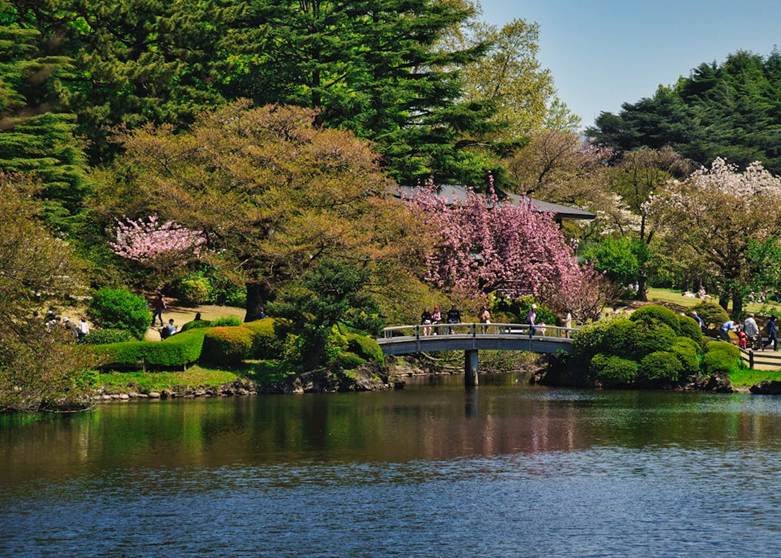
Right in the heart of the hustle and bustle of Shinjuku is the quiet and tranquil Shinjuku Gyoen National Garden. Originally a feudal lord’s residence, it was later converted into a botanical garden for use by the Imperial Family in 1903. Today, it is a public park filled with over a thousand cherry trees, which bloom beautifully in the spring. In the fall, the Japanese maples are full of red and yellow leaves, making the area a beautiful natural escape from one of Tokyo’s busiest commercial districts.
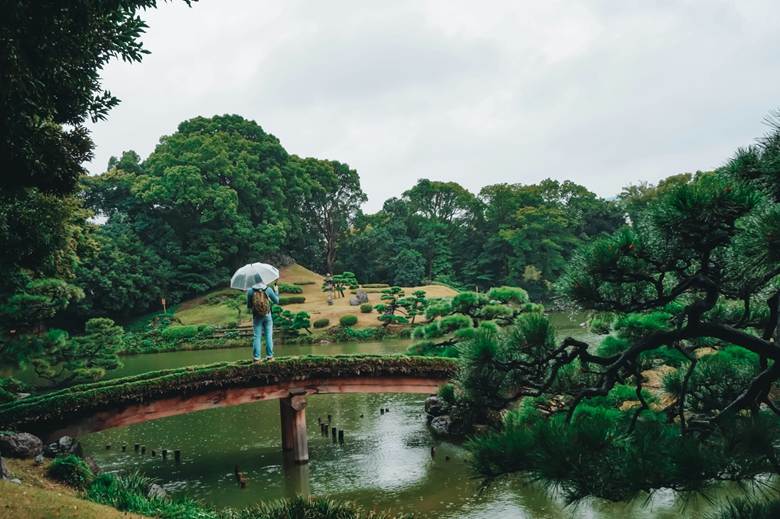
Kiyosumi Garden is another beautiful Japanese landscape garden, which features landscape stones and stepping-stone footpaths through the emerald waters of small ponds. Landscape stones are highly sought after in Japan, and this garden has stones sourced from all over the country! Similar to Shinjuku Gyoen, Kiyosumi Garden was also once the home of a feudal lord, but was later turned into a public garden in 1932. The Garden also features a historical teahouse where guests can enjoy traditional Japanese tea and wagashi (Japanese sweets) while relaxing in the beauty of their surroundings.
Also Read: 5 Tokyo Japanese Tea Houses for a Sip of Tranquility
Visiting Japanese-style gardens in different seasons truly allows you to appreciate the deep thought, planning, and intentionality that goes into arranging the gardens for the public’s enjoyment. The tranquility and beauty of your surroundings allows for Zen moments of stillness and introspection to overtake you – and who knows? You just might find that glint of inspiration and creativity that the ancient Japanese poets also sought, before composing a beautiful haiku!
3. Try Ikebana, Japanese Floral Arrangement Workshops
Inspired? Try your hand at ikebana, the art of traditional Japanese flower arrangement, at workshops in Japan’s capital! Known more generally as kado, or the way of flowers, there are many schools of ikebana that focus on a variety of styles of flower presentations!
Ikebana began in the 14th century as an attempt to represent natural scenery. As flowers were common decorations in shrines and temples at the time, flower arrangement became an intentional art, and its methods and aesthetic principles were combined with Japanese religious beliefs from the time. Ikebana was considered a dignified accomplishment traditionally, and it still holds much cultural significance to this day!
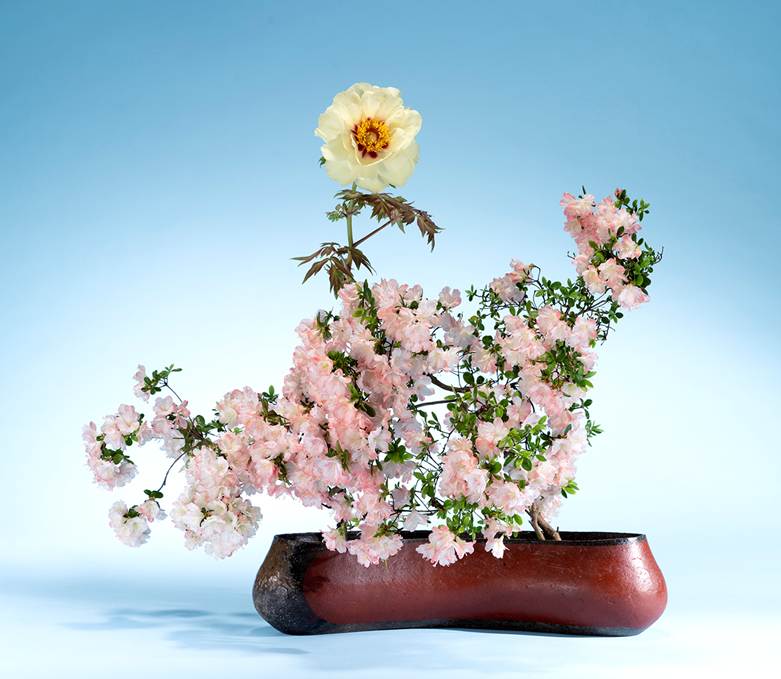
Sogetsu is a well-known school of ikebana, and they offer day classes in English on Mondays (except for public holidays), from 10:30–12:30pm, which cost 6,000yen. The price is inclusive of all flowers and plant materials that you will be using throughout the duration of the class. For first-time visitors, reservations have to be made five days or more in advance, as there is a limited amount of seats in each class.
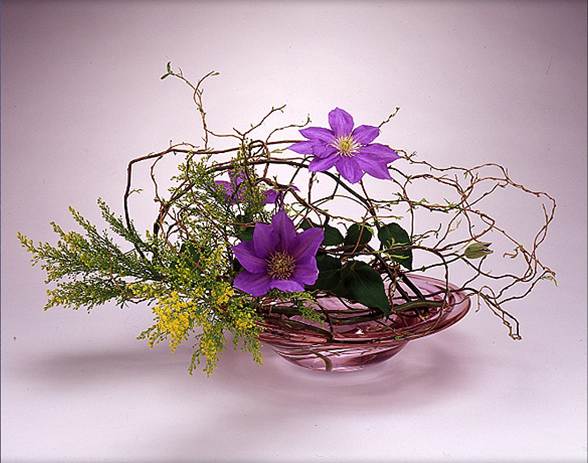
Ichiyo is another famous school of ikebana, and they also offer trial lessons for tourists in English. A lesson runs for about 1 hour and 30 minutes, and costs 6,000yen. This experience also includes the flowers and plants that you will use to create your floral masterpiece in the asking price!
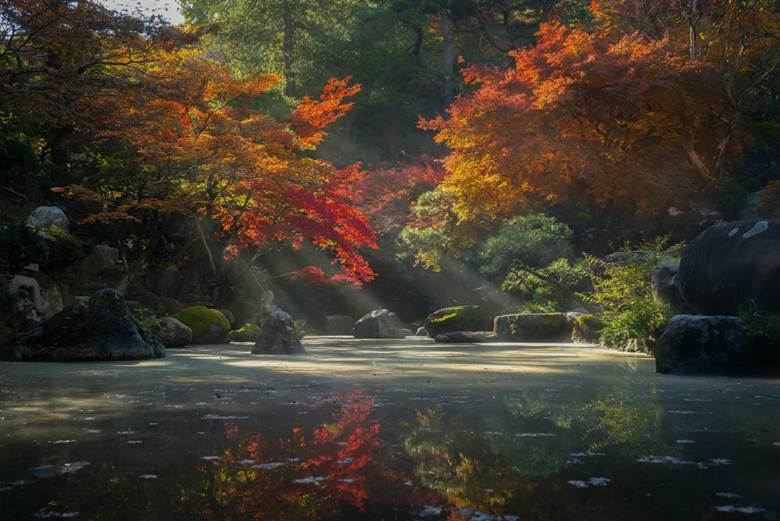
Embracing nature’s physical beauty and respecting its spiritual and symbolic significance is a distinctive aspect of Shintoism in Japanese culture, and these ideas are clearly reflected in their ways of arranging and enjoying plants, gardens, and flowers. So Why not stop by to explore some of the most prominent artforms Japan has to offer on your next trip?
